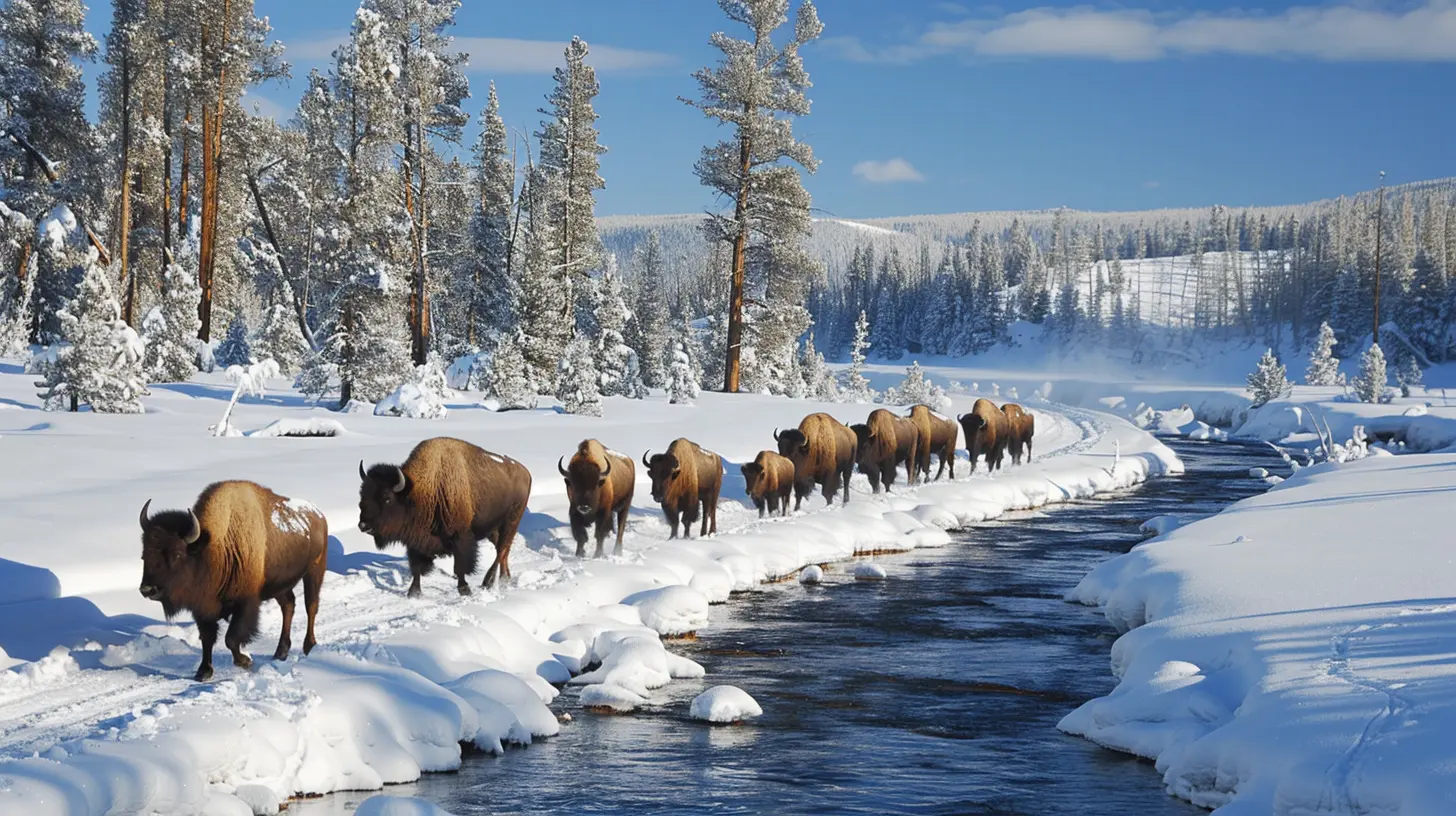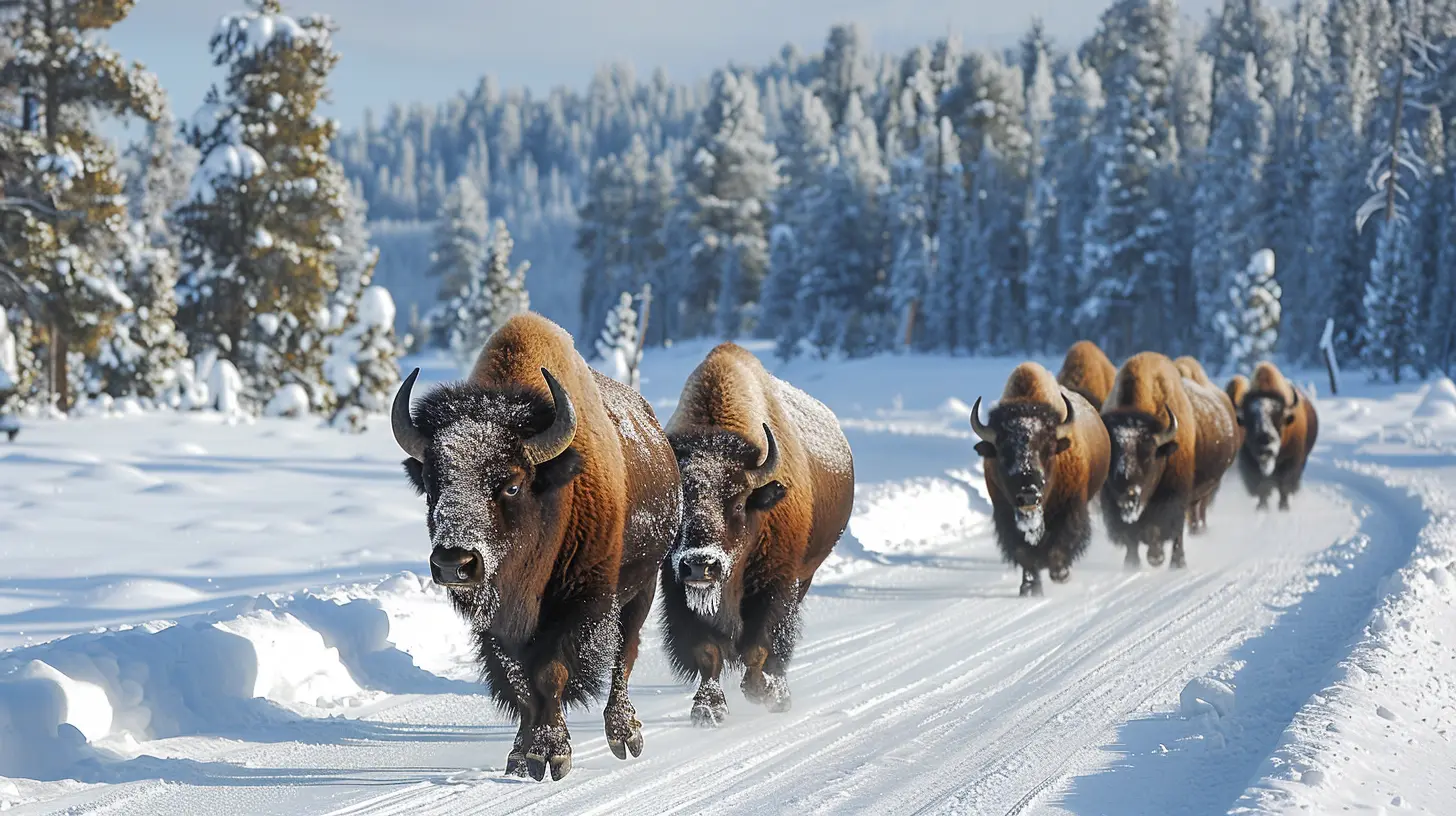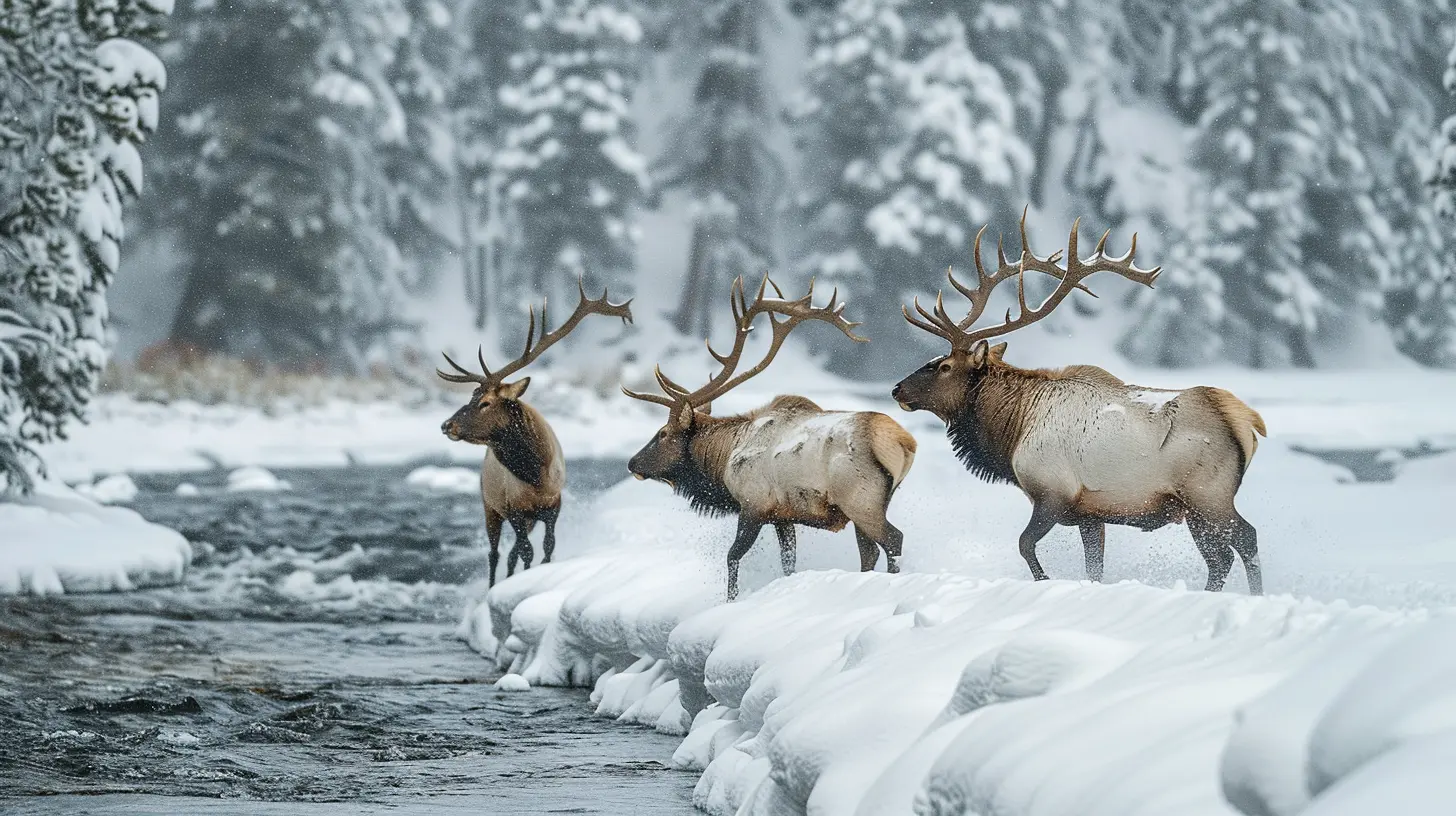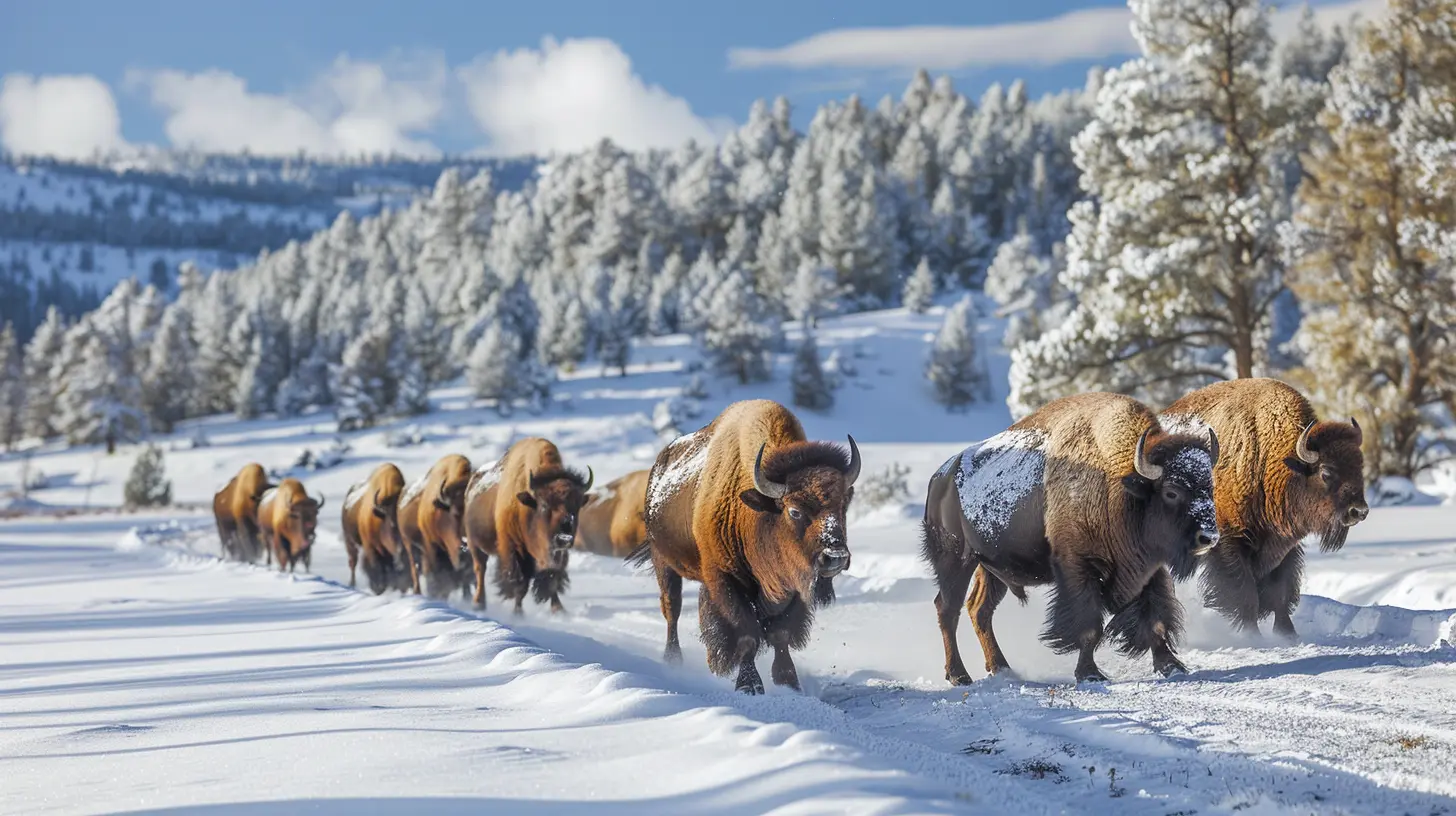Winter Wildlife Safari: A Thrilling Adventure in Yellowstone
14 August 2025
When winter rolls into Yellowstone National Park, a magical transformation takes place. The steamy geysers contrast against the crisp, snowy landscape, and the usual crowds disappear, leaving behind a serene wilderness teeming with wildlife. A winter wildlife safari in Yellowstone isn't just another trip—it's a heart-pounding adventure into one of nature’s most extraordinary displays.
If you've ever dreamed of seeing wolves prowling through fresh snow, bison trudging through icy plains, or bald eagles soaring over frozen rivers, this is your chance. So bundle up, grab your binoculars, and get ready for a thrilling journey into the wild heart of winter!

Why Visit Yellowstone in Winter?
Many people visit Yellowstone in summer, but winter offers a completely different, almost mystical experience. The park becomes a winter wonderland—an untouched, snow-covered paradise where wildlife sightings become more dramatic.Here’s why winter is the best time for a wildlife safari in Yellowstone:
- Fewer Crowds: Without the summer tourists, you get to experience the park in peaceful solitude.
- Better Wildlife Viewing: Animals move to lower elevations, making them easier to spot against the white backdrop.
- Breathtaking Scenery: Snow-covered mountains, frozen waterfalls, and steaming geysers make for picture-perfect landscapes.
- Exclusive Access: Many roads close to regular traffic, but guided snowcoach and snowmobile tours offer unique access to the park’s hidden gems.
Now, let’s dive into the incredible wildlife you can expect to see on your winter safari.

The Top Wildlife to Spot on a Yellowstone Winter Safari
Yellowstone is home to some of North America’s most iconic wildlife, and winter is the perfect time to witness them in action.1. Wolves: The Kings of Yellowstone
Perhaps the biggest draw for winter wildlife enthusiasts is the chance to see Yellowstone’s wolves in their natural habitat. Reintroduced in the mid-90s, these majestic predators thrive in the park, particularly in the Lamar Valley—a hotspot for wolf watching.Winter makes tracking wolves easier. Their dark fur stands out against the white snow, and their hunting behavior is more active due to scarce food supplies. If you’re lucky, you might witness a pack working together to take down an elk—a rare and exhilarating sight.
Pro Tip: Bring a spotting scope or high-quality binoculars—wolves are often seen from afar.
2. Bison: The Snowplows of Yellowstone
Yellowstone’s bison herds are nothing short of legendary. These massive beasts grow an extra thick coat in winter, allowing them to survive temperatures that plunge well below zero. You’ll often see them using their massive heads like snowplows, clearing paths through deep snow to reach buried grass.It’s truly humbling to watch these prehistoric giants battle the harsh elements, steam rising from their warm bodies as they march through the frozen wilderness.
3. Elk: The Winter Wanderers
Elk are another common sight in Yellowstone during winter. With their thick winter coats and imposing antlers, they roam the valleys in search of food, often drawing the attention of wolves. Listening to the eerie bugle of a bull elk in the snowy silence is a surreal experience you won’t forget.Best Places to Spot Elk: Lamar Valley, Hayden Valley, and Mammoth Hot Springs.
4. Bald Eagles: The Masters of the Sky
America’s national bird, the bald eagle, thrives in Yellowstone during winter. As rivers and lakes freeze, these expert hunters patrol the open waters looking for fish and scavenging for winter kills. Seeing one of these regal birds soaring over the snowy landscape is nothing short of breathtaking.Pro Tip: Look for them near the Yellowstone River or perched in tall trees scanning for prey.
5. Coyotes and Foxes: The Stealthy Hunters
While wolves steal the spotlight, Yellowstone’s coyotes and foxes are just as fascinating to watch in winter. These clever hunters pounce through deep snow, using their sharp hearing to detect rodents beneath the surface.One of the most entertaining sights is seeing a red fox perform a “mouse dive”—jumping high into the air before plunging headfirst into the snow to catch a hidden meal. It’s nature’s version of extreme sports!

Best Places for a Winter Wildlife Safari
If you want the best chance of spotting Yellowstone’s incredible wildlife, these locations should be at the top of your list:1. Lamar Valley – The “Serengeti of North America”
Lamar Valley is the ultimate destination for wolf watching. It’s also home to bison, coyotes, bald eagles, and more. The open terrain and high concentration of wildlife make this a must-visit spot.2. Hayden Valley – A Prime Hunting Ground
Hayden Valley is another hotspot for predators and prey alike. Wolves, bison, elk, and even grizzlies (if they wake early from hibernation) can be found here.3. Mammoth Hot Springs – Where Elk Rule
Mammoth Hot Springs remains accessible by car in winter and is one of the best places to see large elk herds. They often wander right into the village!4. Yellowstone River & Lake – Eagle Territory
If you’re hoping to see bald eagles and other birdlife, the Yellowstone River and Yellowstone Lake are prime locations. The geothermal activity keeps some sections from freezing, attracting wildlife year-round.
How to Experience a Yellowstone Winter Safari
You can’t just drive around the entire park in winter—many roads close due to heavy snow. Here’s how to make the most of your safari adventure:1. Guided Snowcoach Tours
Snowcoaches are heated, oversized vehicles designed for winter travel. They provide an incredible way to access remote areas while staying warm.2. Snowmobile Expeditions
For the adventurous souls, exploring Yellowstone by snowmobile is an unforgettable experience. You’ll cover more ground and have the thrill of cruising through the snowy wilderness.3. Cross-Country Skiing & Snowshoeing
If you prefer a quieter, more immersive experience, try cross-country skiing or snowshoeing. You can move at your own pace and take in the beauty of the park up close.4. Wildlife Watching with a Naturalist Guide
Hiring a naturalist guide increases your chances of spotting elusive animals and understanding their behavior. They know the best locations and can interpret tracks, calls, and other signs of wildlife activity.Essential Tips for a Successful Winter Safari
Before you go chasing wolves and bison in the snow, here are some tips to make your winter safari safe and enjoyable:- Dress in layers: Yellowstone’s winter is brutally cold. Wear insulated, waterproof clothing and bring hand/foot warmers.
- Bring the right gear: A good pair of binoculars or a spotting scope is vital for wildlife watching.
- Be patient: Wildlife doesn’t operate on a schedule. Sometimes, waiting in one spot pays off.
- Respect the animals: Keep a safe distance—these are wild creatures in their natural habitat.
- Book in advance: Tours fill up quickly, so secure your spot early.
Final Thoughts
A winter wildlife safari in Yellowstone is an adventure unlike any other. The snow-covered landscapes, the crisp winter air, and the sight of magnificent animals thriving in the harshest conditions create a once-in-a-lifetime experience. Whether you're tracking wolves in Lamar Valley, watching bison battle the elements, or witnessing a bald eagle soar overhead, this journey will leave you in awe of nature’s raw beauty.So, are you ready to trade crowded summer hikes for a true winter wilderness experience? Yellowstone is calling—answer the call of the wild!
all images in this post were generated using AI tools
Category:
Winter DestinationsAuthor:

Claire Franklin
Discussion
rate this article
2 comments
Wolf Flores
I recently experienced a winter wildlife safari in Yellowstone, and it was nothing short of magical. The serene landscapes, frosted trees, and diverse wildlife were breathtaking. Each moment felt like a glimpse into nature's raw beauty. I highly recommend this adventure for anyone seeking a unique winter experience!
November 2, 2025 at 5:22 PM

Claire Franklin
Thank you for sharing your magical experience! We’re thrilled to hear that Yellowstone’s winter beauty left such a lasting impression. Your recommendation will surely inspire others to embark on this unforgettable adventure!
June Mitchell
This article beautifully captures the allure of a winter wildlife safari in Yellowstone. The vivid descriptions of the snowy landscape and diverse fauna evoke excitement, highlighting the unique experience of observing wildlife in their tranquil, wintry habitat.
August 17, 2025 at 2:41 AM

Claire Franklin
Thank you! I'm glad you enjoyed the vivid imagery and the unique experience of a winter wildlife safari in Yellowstone.


